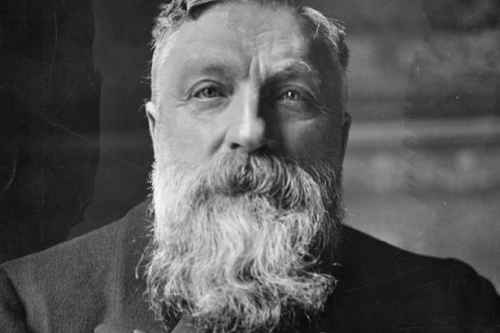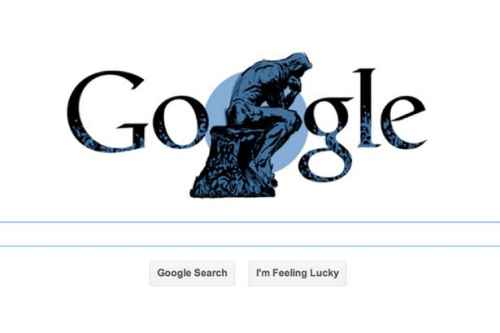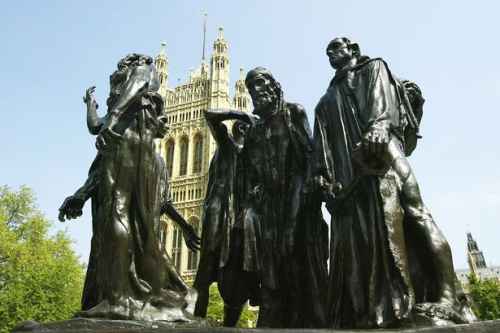 |
| Father of modern sculpture: Auguste Rodin |
Google is celebrating the 172nd birthday of Auguste Rodin, the universally accepted father of modern sculpture.
The French sculptor's work was initially unpopular, but in his later years he became a world-renowned artist.
Today's Google doodle iincorporates one of Rodin's best-known works, The Kiss.
 |
| Tribute: Google's version of The Kiss |
The Kiss
This 1889 marble sculpture of an embracing couple depicts the 13th-century Italian noblewoman Francesca da Rimini from Dante's Inferno, who falls in love with her husband's younger brother Paolo.
The couple are discovered and killed by Francesca's husband.
The lovers' lips do not actually touch in the sculpture, suggesting that they were interrupted and met their demise without them ever having kissed.
 |
| The Kiss |
The Thinker
Probably the best known of Rodin's monumental works, this depicts a man in sober meditation battling with a powerful internal struggle.
First conceived circa 1880–1881 as a depiction of Dante, the image evolved to represent all poets and creators.
It now lives in the Rodin Museum in Paris, and is often used to represent philosophy.
 |
| The Thinker |
The Burghers of Calais
Also completed in 1889, this sculpture serves as a monument to the moment in 1347 during the Hundred Years' War when Calais was captured by the English.
Edward III offered to spare the people if any six of the French port's top leaders would surrender themselves to him almost naked, with nooses around their necks, and carrying the keys to the city and castle.
One of the wealthiest of the town leaders, Eustache de Saint Pierre, volunteered first, and five other burghers soon followed suit, stripping down to their breeches.
This poignant mix of defeat, heroic self-sacrifice, and willingness to face imminent death was captured by Rodin in his sculpture.
 |
| Burghers of Calais |
The Gates of Hell
This sculptural group work depicts a scene from "The Inferno" and contains 180 figures ranging in size from 15cm high up to more than one metre.
It was commissioned in 1880 and was meant to be delivered in 1885, but Rodin continued to work on and off on the project for 37 years until his death in 1917.
Rodin worked on The Gates of Hell at the Hôtel Biron in Paris, and in 1919, two years after his death, the hotel became the Musée Rodin for the world to enjoy his work.
 |
| The Gates of Hell |
The Age of Bronze
This bronze statue of a life-size nude man was first exhibited in 1877 in Paris, when Rodin was falsely accused of having made it by casting a living model.
He vigorously denied the charge, but the controversy benefited him, as members of the public were so eager to see his work and decide for themselves.
The figure was created to suggest heroism and suffering, what many of Rodin's countrymen went through while fighting in the Franco-Prussian War from 1870 to 1871.
 |
| The Age of Bronze |
Source : http://www.mirror.co.uk/news/technology-science/auguste-rodin-the-french-sculptors-five-1431964









